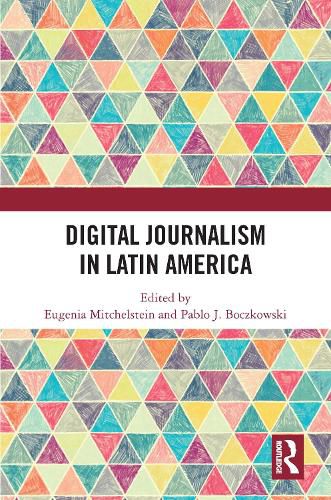Readings Newsletter
Become a Readings Member to make your shopping experience even easier.
Sign in or sign up for free!
You’re not far away from qualifying for FREE standard shipping within Australia
You’ve qualified for FREE standard shipping within Australia
The cart is loading…






This volume showcases the vibrancy of the study of digital journalism in Latin America. It includes an inquiry into journalists' perceptions of media companies' policies regarding social media use; a survey of investigative reporters; an examination of the interaction between traditional broadcast journalists and online news teams in two television stations in Colombia; research on modes of news consumption on Facebook and WhatsApp in Costa Rica and Chile; and a study of the institutionalization of independent journalism in Brazil. The methods employed by the contributors include surveys, in-depth interviews, eye tracking, and participant observation. These texts reveal differences across and within Latin American media and their audiences. This underscores the importance of abandoning the ethnocentric perspective of most journalism scholarship, which tends to homogenize a supposedly exotic other. In a research field marked by inequality, in which the vast majority of studies, authors, and reviewers are from the Global North, where only 14% of the global population lives, the studies included in this volume illustrate how research about and from the other 86% can increase the representativeness of the scholarly endeavor. It was originally published as a special issue of the journal Digital Journalism.
$9.00 standard shipping within Australia
FREE standard shipping within Australia for orders over $100.00
Express & International shipping calculated at checkout
This volume showcases the vibrancy of the study of digital journalism in Latin America. It includes an inquiry into journalists' perceptions of media companies' policies regarding social media use; a survey of investigative reporters; an examination of the interaction between traditional broadcast journalists and online news teams in two television stations in Colombia; research on modes of news consumption on Facebook and WhatsApp in Costa Rica and Chile; and a study of the institutionalization of independent journalism in Brazil. The methods employed by the contributors include surveys, in-depth interviews, eye tracking, and participant observation. These texts reveal differences across and within Latin American media and their audiences. This underscores the importance of abandoning the ethnocentric perspective of most journalism scholarship, which tends to homogenize a supposedly exotic other. In a research field marked by inequality, in which the vast majority of studies, authors, and reviewers are from the Global North, where only 14% of the global population lives, the studies included in this volume illustrate how research about and from the other 86% can increase the representativeness of the scholarly endeavor. It was originally published as a special issue of the journal Digital Journalism.